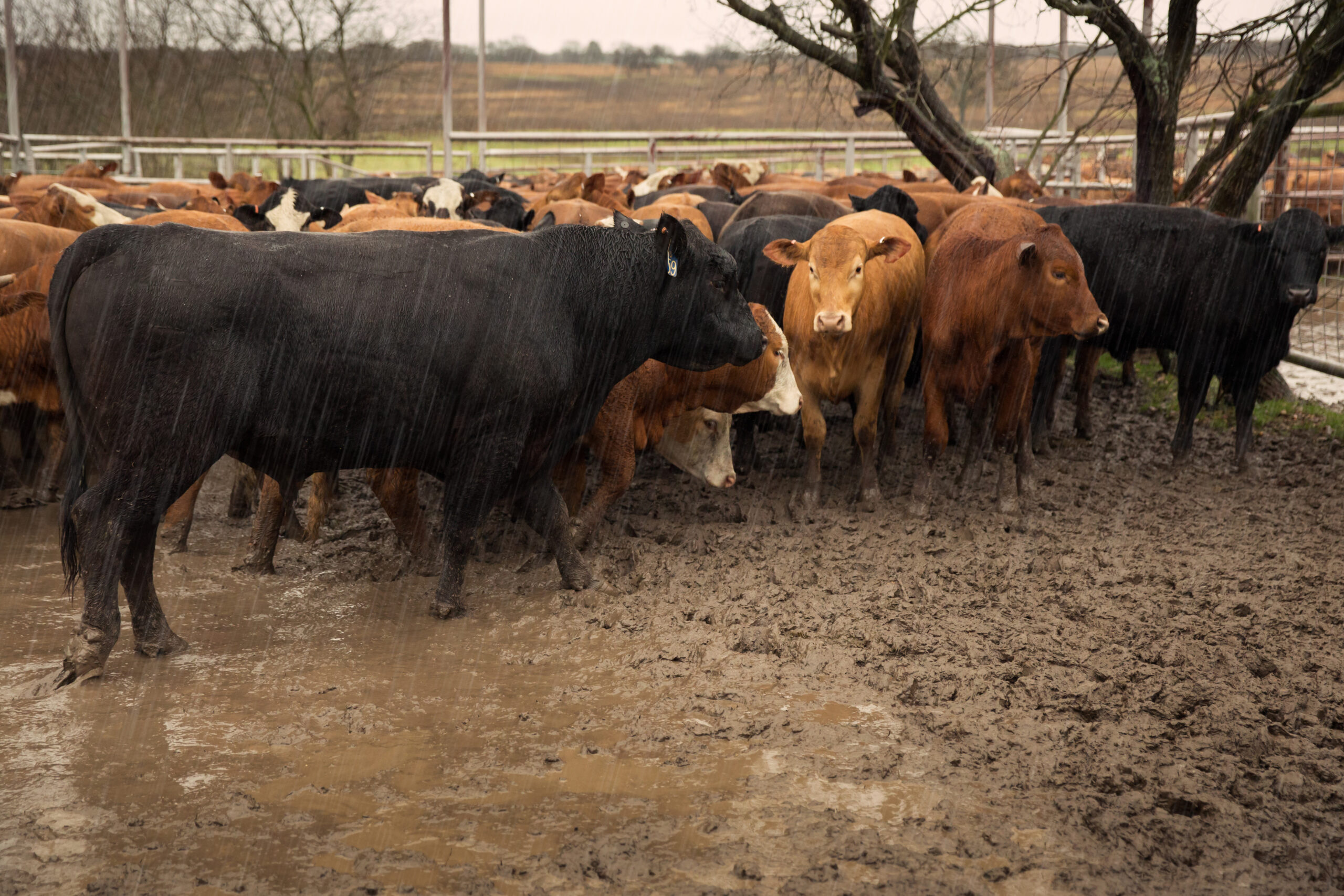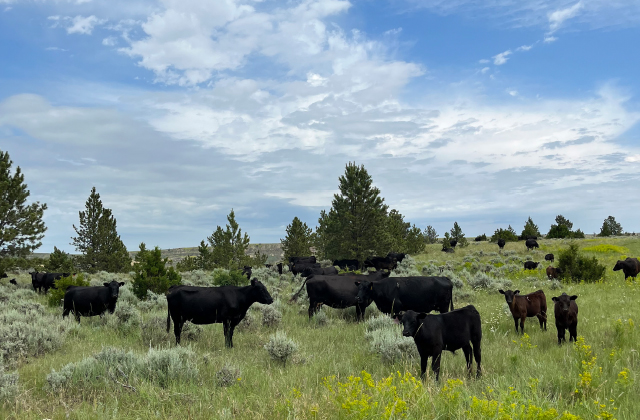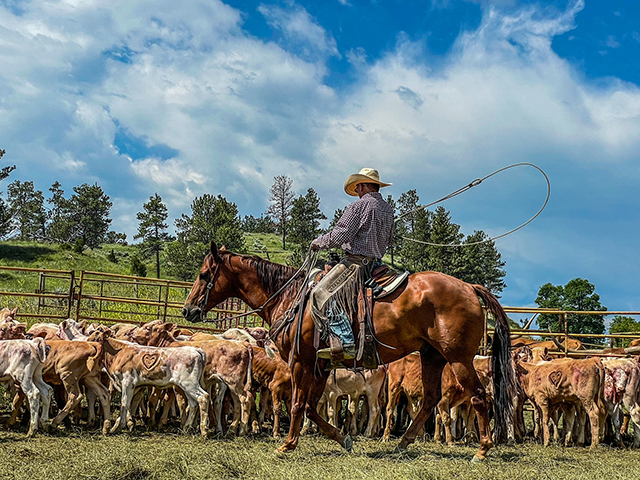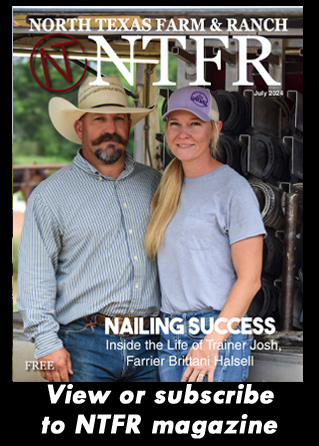Farm & Ranch
Foot Rot in Cattle

By Barry Whitworth, DVM
The Monthly Precipitation Outlook found at the Mesonet website (https://www.mesonet.org) is predicting above normal chances for precipitation for the month of June for most of the area. Many areas have received much needed rain in the past few weeks. With moist conditions, producers should be observing their cattle for foot rot.
Foot rot is caused by Fusobacterium necrophorum subspecies necrophorum and sometimes other bacteria are involved (Porphyromonas levii, Prevotella intermedia, Staphylococcus aureus, Escherichia coli and Truperella pyogenes). These bacteria are normal inhabitants of the digestive tract of cattle and consequently in the environment. The problem arises when the bacteria enter the tissue of the foot through a break in the skin. The damage to the skin may be from puncture wounds or abrasions or continuous exposure to wet conditions which softens the skin. Once the bacteria gains entry into the tissue, it multiplies and releases toxins that damage tissue. If left unchecked, the bacteria invade deeper structures in the foot. This may result in permanent problems and may shorten the life of the cow.
Diagnosis of foot rot begins with a thorough examination of the foot. Foot rot lesions usually infect both claws, so if only one claw is infected, the problem is not likely foot rot. Producers should look for signs of swelling between the toes as well as redness or necrotic tissue. Also, observe for separation of the skin at the hoof wall. Most cases of foot rot will have a foul spelling odor. The foot may feel warm to the touch. This distinguishes foot rot from fescue foot which is cold to the touch. Cows may have a fever and refuse to eat. Most cows are reluctant to bear weight on the infected foot due to pain.
To read more, pick up a copy of the July issue of NTFR Magazine. To subscribe call 940-872-5922.
Farm & Ranch
Ag Elsewhere: Wyoming

By Tressa Lawrence
Ranchers across northeast Wyoming and the surrounding areas saw record moisture levels in 2023. The year 2024 has seen significantly less moisture to date.
Farm & Ranch
Ag Elsewhere: Montana

By Lindsey Monk
People are finishing up brandings. Here, Danny Walter is shown getting it done.
Farm & Ranch
Animal Disease Traceability

By Barry Whitworth, DVM
On July 6, 2020, the United States Department of Agriculture Animal and Plant Health Inspection Service (APHIS) posted in the Federal Register a proposal that radio frequency identification tags be used as official identification for cattle and bison. Following a period for public comment, the USDA APHIS released a statement on April 24, 2024, with the amended animal disease traceability (ADT) regulation for cattle and bison. The full press release may be found at https://www.aphis.usda.gov/news/agency-announcements/aphis-bolsters-animal-disease-traceability-united-states. Under the new rule, cattle and bison will need to be identified with tags that are both visual and electronic.
The USDA defines ADT as knowing where diseased and at-risk animals are, where they have been, and when the animal disease event took place. A system that allows for efficient traceability of livestock in the United States is essential for animal health and reducing the economic effect of a foreign animal disease outbreak and other diseases on livestock producers as well as others whose well-being depends on livestock production.
To read more, pick up a copy of the July issue of NTFR magazine. To subscribe by mail, call 940-872-5922.
-

 Country Lifestyles1 year ago
Country Lifestyles1 year agoScott & Stacey Schumacher: A Growth Mindset
-

 Country Lifestyles7 years ago
Country Lifestyles7 years agoStyle Your Profile – What your style cowboy hat says about you and new trends in 2017
-

 Equine10 months ago
Equine10 months agoThe Will to Win
-

 HOME7 years ago
HOME7 years agoGrazing North Texas – Wilman Lovegrass
-

 Country Lifestyles4 years ago
Country Lifestyles4 years agoAmber Crawford, Breakaway Roper
-

 Outdoor9 years ago
Outdoor9 years agoButtercup or Primrose?
-

 Country Lifestyles8 years ago
Country Lifestyles8 years agoDecember 2016 Profile, Rusty Riddle – The Riddle Way
-

 Country Lifestyles8 years ago
Country Lifestyles8 years agoJune 2016 Profile – The man behind the mic: Bob Tallman






